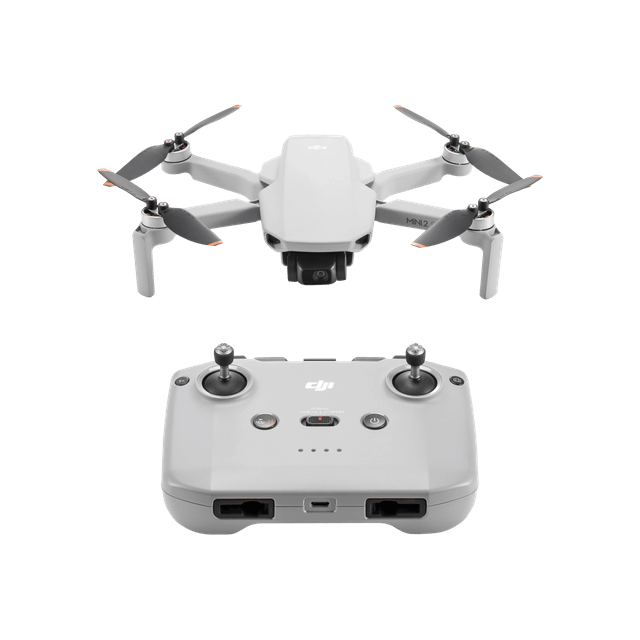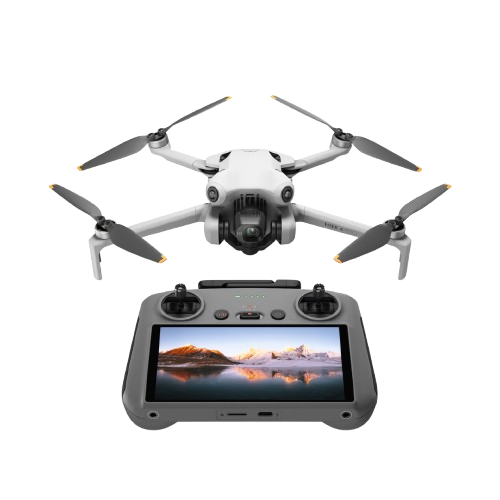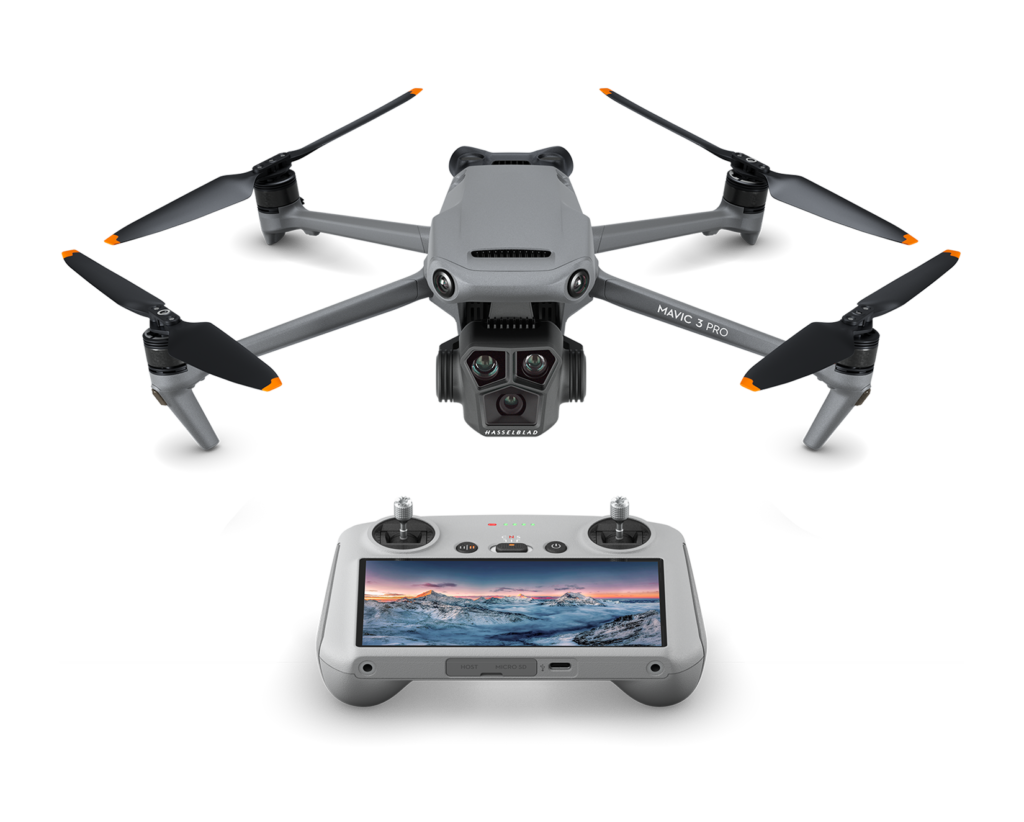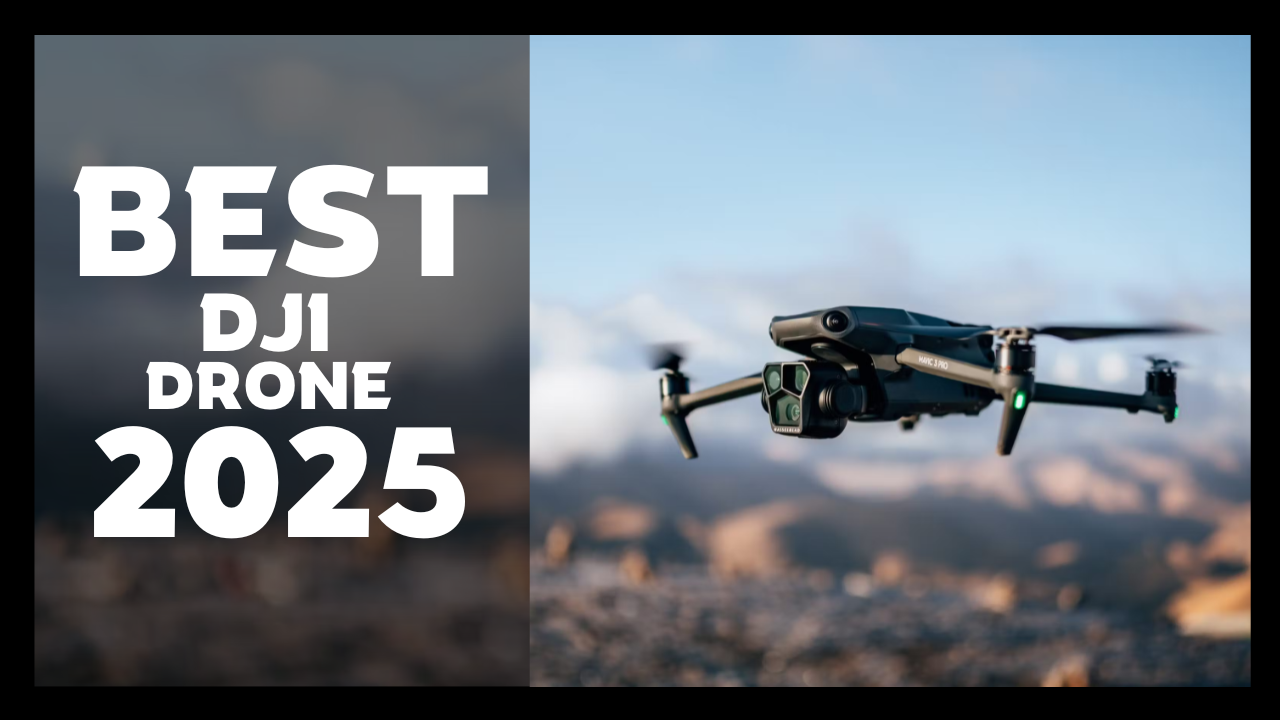It’s no secret that DJI produces some of the finest drones available; our extensive testing indicates that any kind of pilot may find a suitable drone in its lineup. We’ve flown every DJI drone, from entry-level models to high-end flying machines, and have compiled our thoughts here to assist you in selecting the best one.
Every DJI drone has a unique feature. If we had to choose only one to suggest, it would be the DJI Mini 4 Pro since, during testing, we discovered that it was both simple to fly and capable of producing amazing video. We also valued the inclusion of sensors for obstacle avoidance and subject tracking. However, given the diversity of DJI’s lineup, there may be another drone that is more appropriate for your requirements.
The outcomes of our evaluations have been condensed and organized for your convenience in the guide that follows. Here, you may choose a flagship flyer with pro-grade features or a folding model that weighs less than 250g, together with all of our professional views gleaned from many hours of flying.
Table of Contents
- No 1 DJI Mini 2
- No 2 DJI Mini 4 Pro
- No 3 DJI Mavic 3 Pro
Top 3 Best DJI drone In 2025
No 1 DJI Mini 2

The DJI Mini 2 is the perfect entry-level drone for beginners looking to get to grips with flying, capturing, and editing birds-eye views of beautiful landscapes and cityscapes (where permitted). Although it lacks obstacle avoidance sensors and has a smaller sensor than the Mini 3 Pro, the Mini 2 features 4K resolution, unlike the original Mavic Mini. However, if you’re content to photograph in the brighter daytime hours, you won’t be let down by your choice.
The DJI Mini 2 is an incredibly tiny and user-friendly drone that can be launched in a matter of seconds after being slipped into a jacket pocket. Less than 249g is the weight of the Mini 2. The first thing that stands out in the DJI Mini 2 video is how stable it is in all but the windiest situations, which is really amazing for such a little drone.
This quadcopter easily navigated a windy London cityscape despite level five wind resistance. In gloomy conditions, unedited footage may seem a little flat and underexposed; it’s evident that DJI handles footage carefully and with video editors in mind. It’s very clear. While you can achieve decent 3x zoom video at 1080p, digital zooming is restricted to roughly 2x if you’re recording in 4K.
However, the Mini 2’s useable zoom range and, in fact, usable film disappear as soon as the light goes off. In conclusion, the Fly More Combo’s three batteries allow for around 90 minutes of flying duration, and on a little windy day, we were able to film at mixed 1080p and 4K quality for about 30 minutes on a single charge. Three connection cables are included in the box: Lightning, micro USB, and USB-C. The spring-loaded phone holder extends out of the top of the controller and has a chamber within.
Pros
- Intuitive navigation
- Compact, convenient drone
- Great battery life
Cons
- Pricier than predecessor
- No new camera hardware
- No follow mode
No 2 DJI Mini 4 Pro

The DJI Mini 4 Pro is a superb sub-250 g drone with features that make it ideal for professional and enthusiast use alike. While omnidirectional vision sensing makes it safer to fly the drone in more complicated areas and offers more sophisticated functionality, video capability has been enhanced with the addition of the D-Log M color profile and 4K 100 fps slow-motion recording, among other new capabilities. This raises the issue of whether you should upgrade if you currently possess a Mini 3 Pro. And the straightforward, if useless, response is that you alone have the last say.
Despite having less features than the Mini 4 Pro, the Mini 3 Pro is still an excellent drone. However, the Mini 4 Pro is a great option if you’re switching from an earlier model or are new to the Mini series. The Mini 4 Pro is without a doubt the greatest sub-250 g drone on the market, regardless of whether you’re a professional drone pilot using it as a backup drone and can take advantage of the D-Log M video color constancy with your Mavic 3 or a hobbyist searching for something compact and light.
In terms of design, DJI Mini-series drones don’t need much introduction these days. The Mini 4 Pro shares a lot of similarities with the Mini 3 Pro, including its folding design, small weight, and regulator-friendly size. The primary visual differences are the additional Omnidirectional Collision Avoidance sensors on top of the airframe and an Auxiliary Light on the bottom.
The majority of the improvements are, in a sense, beneath the hood and take the shape of improved features and software. When compared to the sensors in flagship Mavic 3 prosumer models, the 12/48MP 1/1.3-inch sensor is identical to the Mini 3 Pro’s, albeit with improvements in image processing. This isn’t a bad thing, though, because it’s a fantastic sensor that can produce excellent image quality despite its small size.
Pros
- Improved video features
- Omnidirectional Vision Sensing
- Remains under 250g
Cons
- Upgrades may not tempt Mini 3 Pro owners
- Not suited to windy conditions
- Fixed-aperture camera
No 3 DJI Mavic 3 Pro

The Mavic 3 Pro, the first triple-camera consumer/prosumer drone in history, firmly assumes the top spot in the Mavic 3 drone series. This is the most adaptable Mavic drone to date, including a superb 20MP Four Thirds primary camera in addition to 70mm and 166mm telephoto sensors.
Overall, the image quality is excellent; but, the Mavic 3 Pro is more limited than models weighing less than 31.74 oz/900 g since it weighs more than that, placing it in the C2 European drone category. The DJI Mavic 3 Pro’s distinctive huge three-camera gimbal at the front of the drone pushes the series toward more creative possibilities because of those three practical cameras for both photography and video.
With all the amazing safety and flying capabilities that the Mavic 3 series drones are renowned for, this is the first triple-camera drone in the world and is unquestionably among the finest drones on the market.
Three Apple Pro Res choices provide a noticeably greater bitrate for professional operations, while the Normal, HLG (hybrid log-gamma high dynamic range), and 10-bit D-Log M profiles give video resolutions up to 5.1K at 200Mbps. DCI 4K (4096 x 2160 17:9 cinematic 4K) can shoot at up to 120 frames per second, 4K can shoot at up to 120 frames per second, and FHD can shoot at up to 200 frames per second. Additionally, images may be taken in JPEG and 12-bit raw formats.
Pros
- Three useful cameras
- Excellent image quality
- Solid safety features
Cons
- C2 European rating
- Not everyone will need three cameras
- Slightly reduced flight times
How to choose the best DJI drone
When choosing a DJI drone, budget will be a key factor. Sub-250g drones like the DJI Mini 4 Pro are much less expensive than professional aircraft like the DJI Inspire 3. Pro-grade features and a great deal of adaptability are the rewards. Most consumers will discover that the sweet spot is in the center of the spectrum, where devices like the DJI Air 3 strike a mix between cost, mobility, and performance. Last-generation drones like the DJI Mini 3 are another option if you’re searching for something less expensive.
Learners should look for models with safety features, such as obstacle avoidance. This isn’t found on every DJI drone, but its a useful option to reduce the risk of mid-air collisions. DJI drones are also known for their automated shooting and subject-tracking modes, which make it easier to capture cinematic shots.
Most DJI drones are sold with a controller, but these aren’t all the same. Though DJI has manufactured many controller types, it’s important checking which kind comes with your selected model. Almost all of them include some sort of screen and joystick arrangement. If you want additional control or a different kind of grip, you may also decide to upgrade to an optional handset.
DJI drones are renowned for their image quality and the effectiveness of their stabilization. Pretty much every DJI drone can record 4K video, but some capture higher frame rates and better dynamic range. The right choice will depend on whether you plan to focus more on stills or video, and how serious you are about either (or both). The Mavic 3 Pro, for example, has three cameras for maximum versatility, while the DJI Mini 3 Pro supports the D-Log M color profile for consistent video grading.
Lastly, don’t ignore weight and size. Weight restrictions are important, however many DJI drones can be folded up to fit in a backpack or carry bag for convenient travel. Although they need more registration, larger drones are often more stable. Most laws do not apply to drones weighing less than 250g, such as the DJI Mini 4 Pro.
Please be aware that we may receive a commission if you buy something after clicking on the links in our stories. This helps to fund our work. Thank you for your support and attention. Feel free to look around further to find out more about how these commissions support our work. Top Great Reviews

